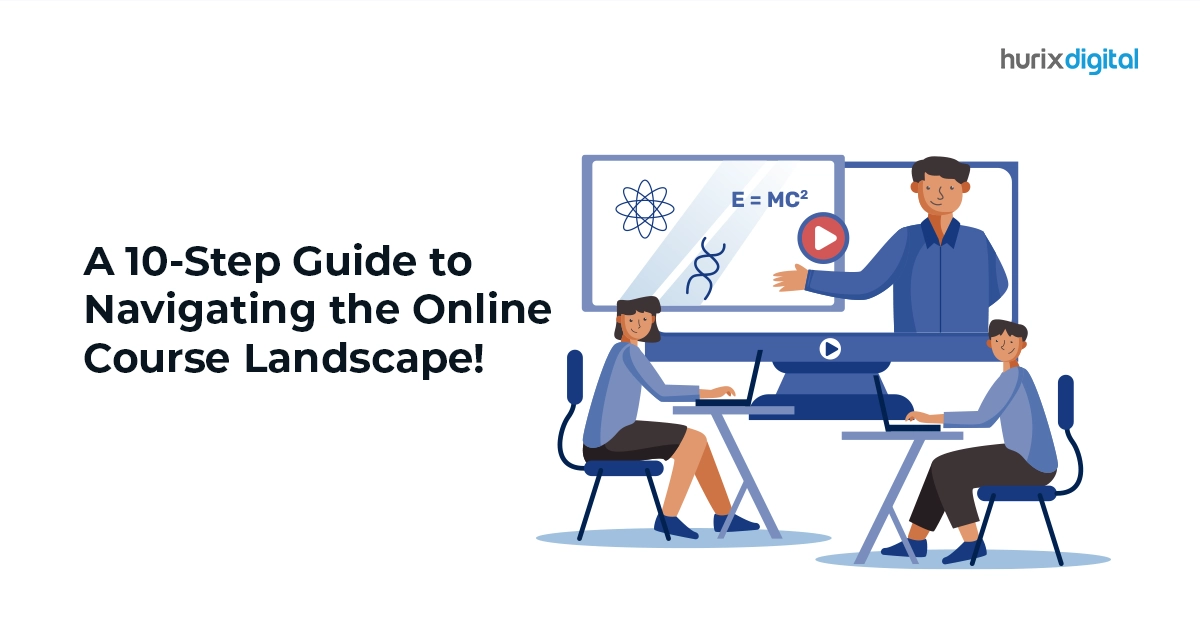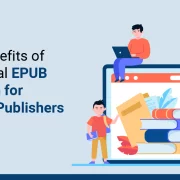
Your 10-Step Guide to Navigating the Online Course Landscape!
Summary
Discover a ten-step guide to navigating the online course landscape. This blog offers tips for selecting and managing online courses effectively.
There are countless versions of the beloved dish biryani, but nothing compares to the one specially made for you, perhaps with the personal touch of a mother’s care. This bespoke experience is what eLearning Course Development emulates.
Unlike traditional educational formats that offer a one-size-fits-all approach, eLearning is like that custom-made biryani, allowing for a learning experience suited to the learner’s pace and preference. This level of personalization not only makes learning more effective but also more enjoyable.
Now, let’s imagine you are a culinary maestro, eager to craft a course titled “Essentials of Indian Cooking”. Follow the steps below to learn how to structure an online course on it.
Table of Contents:
- Ten Steps on How to Structure an Online Course
1. Define Your Objectives
2. Understand Your Audience
3. Content Structure
4. Select the Right Platform
5. Curate Engaging Content
6. Incorporate Interactive Elements
7. Apply Effective Assessment Strategies
8. Ensure Accessibility
9. Provide Continuous Support
10. Gather Feedback and Iterate - Conclusion
Ten Steps on How to Structure an Online Course
1. Define Your Objectives
Start by asking: What should learners learn? Is it mastering the art of spice blending, or understanding regional cuisines? Set clear and measurable goals like: “Learners will demonstrate the ability to prepare and present three regional Indian dishes, assessed through video submissions.” This will help you structure your course effectively. Use Bloom’s Taxonomy verbs like “demonstrate,” to define actionable learning outcomes.
2. Understand Your Audience
Are your learners culinary novices or seasoned foodies looking to explore Indian cuisine? For beginners, you might start with the basics of Indian spices, while more experienced cooks could dive into regional specialties. This step is crucial for tailoring the content to meet their needs. Tools like Google Forms can be used to gather insights, while Xtensio can help in creating detailed learner personas.
3. Content Structure
Lay out your course like a well-organized recipe book. A well-structured course guides learners through a logical progression of topics. Each lesson builds upon the previous, from understanding basic spices to mastering complex dishes. Start with an appetizer – an introduction to Indian cuisine. Follow with lessons on key ingredients, cooking techniques, and regional dishes. Feature case studies, like how biryani varies from region to region. Include practical applications, such as planning an Indian dinner party. It’s about organizing your material in a logical, coherent, and engaging manner.
Also Read: How to Use AI and Gamification to Assess Student Learning?
4. Select the Right Platform
When selecting a Learning Management System (LMS) or eLearning Platform for your course, consider its user interface, ease of navigation, and tools for tracking student progress. Ensure it aligns with your course’s objectives and teaching style. For a visually rich subject like cooking, platforms like Udemy or Skillshare, known for their robust multimedia support, can be ideal.
These platforms allow for high-quality video uploads, which are essential for demonstrating the skills that the learner has gained on the course. These platforms also have engaging interactive elements like quizzes and discussion forums. learners can also upload their work, including photos or videos. This helps learners apply what they have learned, receive feedback, and chat with their classmates.
5. Curate Engaging Content
Creating material involves not only delivering informative content but also making it captivating. By integrating a variety of formats such as text, videos, infographics, and podcasts, the content can appeal to diverse learning preferences, ensuring it is both educational and engaging. Like, for the cooking course, you can use Canva to design graphics explaining spice combinations or Vyond to create video tutorials for dishes using animation.
Incorporate storytelling into your course content. Share the history behind dishes, anecdotes about regional cuisines, or personal cooking experiences. This approach helps in creating a more relatable and immersive learning experience.
6. Incorporate Interactive Elements
Adding interactive bits like quizzes, chats, and hands-on simulations brings your course to life. It’s all about getting your learners involved instead of just reading. For quizzes that grab attention, Kahoot is your go-to. Need to build some cool interactive simulations? Give Articulate Storyline a whirl. And for your cooking course, turn your kitchen into a virtual classroom with live Q&A sessions on Zoom. It’s a fun way to make the learning stick and keep everyone on their toes!
7. Apply Effective Assessment Strategies
This involves using a mix of formative and summative assessments to evaluate and reinforce learning based on the learning objectives you defined in Step 1. Assess your learners with practical tasks, like preparing a specific dish. Use Turnitin to check any written recipe assignments for originality. Peer assessments can also add a layer of community learning, where learners can share feedback on each assignment. Tools like Peergrade or built-in LMS features can facilitate this process, fostering a sense of collaborative learning.
8. Ensure Accessibility
You must make sure that your course is accessible to everyone, including individuals with disabilities. For this, adhere to the Web Content Accessibility Guidelines. Incorporate alternative texts for all images to provide descriptive information about the visuals for those with visual impairments. Additionally, include subtitles in your cooking tutorials and provide transcripts for your podcasts. Utilize tools like Amara for creating subtitles, making sure that every learner can fully engage with and benefit from your course.
9. Provide Continuous Support
It is about being available to your learners throughout their learning journey. It includes offering feedback, conducting Q&A sessions, and facilitating community forums. For example, what if your learners want to ask you about how to substitute ingredients or adjust flavors? For this, you can set up weekly virtual office hours or create an interactive community on Slack for personalized tips or troubleshooting.
10. Gather Feedback and Iterate
Use SurveyMonkey to collect feedback and track engagement on your course. Did learners find the Masala Dosa tutorial helpful? What about the spice blending exercise? Use this feedback to refine your course, adding more chutney recipes or a module on street foods perhaps! This step is crucial for keeping the course relevant and effective.
Also Read: Master K12 Education With Virtual Learning Environments
Conclusion
When you are developing an online course, be it on Indian cooking or anything else, it’s more than just sharing your knowledge. It’s about creating a learning adventure that resonates with each person.
Think about it – everyone learns differently, needs different kinds of help, and interacts with content in their way. So, when you mix all these elements thoughtfully, you are not just teaching; you are taking your learners on an amazing journey designed especially for them. It’s like cooking a great meal – you need the right ingredients, a bit of flair, and a whole lot of love. The best courses, just like the best dishes, come from putting in that extra effort and a sprinkle of creativity.
Hurix Digital wants only the best for you and your students. With our panel of trusted experts, you can sit back and get only the best for you!
Get in touch with us to know more!

As a Cambridge CELTA-certified educator and lead instructional designer, I specialize in developing comprehensive learning materials for schools, higher education institutions, and corporations. My passion for EdTech and commitment to lifelong learning drive me to explore new educational frontiers continuously.




